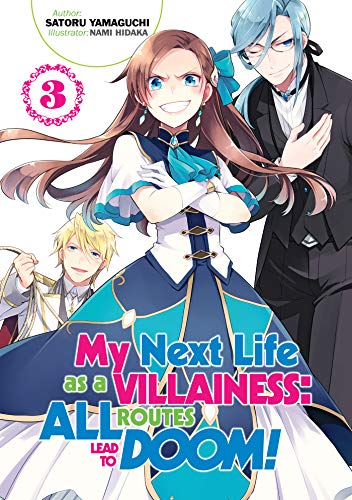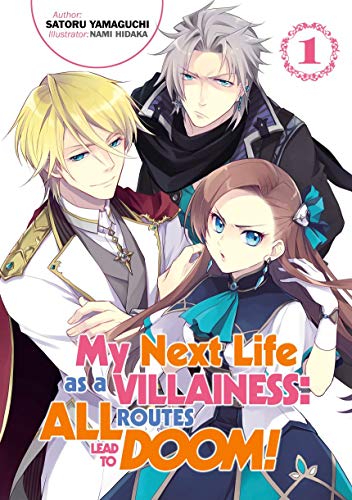By Satoru Yamaguchi and Nami Hidaka. Released in Japan by Ichijinsha. Released in North America by J-Novel Club. Translated by Shirley Yeung.
The author admits in the afterword that the series was supposed to end with the second volume, which was pretty obvious (see my review of said volume), but presumably the series did well enough for more. As such, this is the “difficult second album” for Bakarina, with the first half of the book in particular spinning its wheels and showing us the same sort of thing that we’ve seen before. Katarina goes around the school festival with her classmates, eating lots of food, and coming across her friends one by one as they attempt to either flirt with her or cut off others flirting with her, which Katarina herself remains blithely oblivious. And, of course, we then get to read it again, because one of the conceits of the book (which I sometimes quite enjoy – see the second half of the volume) is that we see Katarina’s POV followed by other POVs of the same scene. It can be exhausting.
The best part of the first half of the book is the play, where one of the actresses falls ill and Katarina has to take on the role of the wicked stepsister. (I thought this was a ploy by Jeord, but apparently not.) Since she blanks on her lines, she just decides to act the part on instinct, and everyone is amazed at how well Katarina can play a villain! It’s metatextually delicious, frankly. The meat of the book, though, is in the second half, as Katarina is kidnapped as part of a plot to get Jeord to give up his claim to the throne. This is supposedly engineered by the second price’s fiancee Selena, but she’s more an easily led dupe. (Her idolization of Katarina also shows that our heroine is not the only one in the cast to completely misinterpret everything.) In reality, it is the smiling “butler” Rufus who is doing this, theoretically on behalf of the eldest son.
There are no real surprises in Bakarina, to be honest – even the secret identity of one of the characters was easily guessed once I saw their reaction to Katarina being Katarina (hysterical laughter – she’s clearly a reader stand-in). You read this series because you enjoy seeing Katarina being dense, and also because you enjoy seeing Katarina converting everyone around her with the sheer power of her niceness. This world, as it’s an otome game, runs on tropes, and this gives Katarina, who has memories from the real world, an advantage at times in dealing with people unable to understand why in God’s name she’d go this far for someone. That said, we may have finally hit a turning point regarding the main relationship, as after being scared out of his wits by Katarina’s kidnapping, and also seeing that Rufus (who now loves her, of course) bit her on the neck, responds by kissing her, and explicitly stating his love. Even Katarina can’t ignore this. Right?
There is some setup for future books here, as graduation is coming soon and we’;re clearly going to have Katarina working for the Ministry with Maria… and no doubt the rest of the cast. Still, this was an enjoyable book despite all its flaws, and got better as it went along. It’s definitely a book where you see the smoke pouring out of the author’s brain as they write, though.





